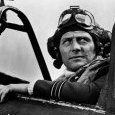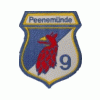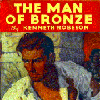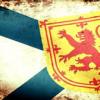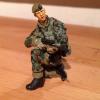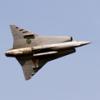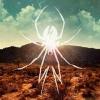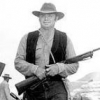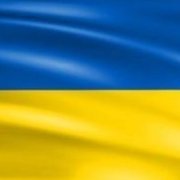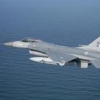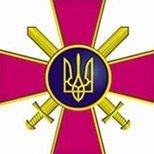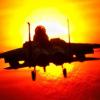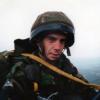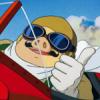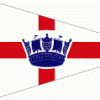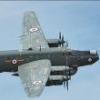Leaderboard
Popular Content
Showing content with the highest reputation on 26/11/15 in all areas
-
Hello all, Here is my recently finished Eduard (Academy) F-4B Phantom, in the markings of VMFA-542 'Bengals', Da Nang, 1965. Built for the Vietnam GB, the build thread is here Along with the Eduard refinements of etch and resin, I added Quickboost FOD covers, Hypersonic Martin Baker MK5 ejection seats, and True Details MK77 Napalm canisters. The MK82's are Hasegawa as the kit ones appear misshapen and have odd looking fuses. The twin shot Zuni rockets are from a Hasegawa Crusader and the AIM-7's are from the kit. Marine CAS, 1965 and 2005: Thanks for looking. Dave20 points
-
20 points
-
The Monogram kit was re-scribed, the Airfix kit donated the Nose and tail sections only, resin cockpit, Flightpath CLB pod and decals are Sky. The 330 Gal ferry tanks were made by converting F-111 tanks and all paints are Tamiya Acrylics. The WiP thread id here http://www.britmodeller.com/forums/index.php?/topic/234992202-harrier-gr3-merging-monogram-airfix-kits-148/17 points
-
Hi All, Just managed to catch a bit of brightish weather and took some photo`s of my latest completion My attempt at Hobby Bosses 1/48 MiG-17F Finished to represent an aircraft of: 921st Fighter Regiment, NVAF, Sao Do around 1968 Built pretty much from what`s in the box, minus the engine to try and make it sit on the nose wheel a bit easier Still took a fair bit of weight though ( might have to reinforce the shelf ) Decals are from `L Decals Studio` sheet LDS 48007, `MiGs over North Vietnam part 2` Had to try this scheme when I saw it though I was tempted by a stripey camo`d option on the sheet. Hope you enjoy Thanks for looking, Cheers Russ16 points
-
Time for a quick update - first, of course, my weekend in Toronto. We rented a nice condo (through Airbnb) on the 38th floor of a building right on Yonge Street. What a beautiful view - and a very nice condo as well. The concert (the last of three shows in Toronto) was what I expected. In other words, not like any King Crimson concert I had seen in the past. Mr. Fripp is incredibly innovative, and the current 7 man line-up is amazing. Three drummers in front, with two guitars, bass/stick/cello, and woodwinds across the back. All in black suit and tie I might add! The show ran well over two hours, and I was completely gobsmacked - still am! So, let's see, oh yes - Fireflies! I added the stickers to the FR.1, and I was a bit disappointed that there were so few. The clear gloss darkened the paint scheme a bit, but it will lighten back up after the clear flat goes on. (Strange reflection aft of the exhausts on that last one. Odd.) I think I will do a light wash before I add some weathering and the final flat coat. The FR.1 is not too far from being done, and the TT.4 is getting close to the painting stage. I've been thinking about the proper sequence for applying the colours to the TT - it has an aluminium coloured fuselage, yellow bands on the fuselage and wings, and a yellow bottom with black stripes. I've read that the TT is painted with an aluminium lacquer, and is not natural metal. I recently bought a few bottles of Alclad High Speed Silver. I know that Alclad is known primarily for its use in natural metal finishes, but it is in reality a lacquer paint. Using it on the TT should be right and proper then! Cheers, Bill16 points
-
Finished this a few weeks ago but only just got arounbd to uploading pics. Not quite the correct grey (which was totally my fault) but still looks ok. An enjoyable build, so much so that i have also bought the F version.12 points
-
Calling this one finished. Lots of things I could improve on, but that's what this game's about! Tamiya kit, xtracrylix paints, Flory light dirt wash 'cos it's the only one I have. Thanks to Tony O'Toole for the wingtip help & Workinprogress and Housesparrow for the advice on painting.12 points
-
In my growing collection of FAA planes the Sea Fury is a must-have, of course. The Trumpy model is for sure one of the worst kits from this company in respect of accuracy and fit. A little bid of help comes from Flightpath. This correction set was designed for Hobbycraft, but fits nice to Trumpy as well. Additionally I used some Eduard for the cockpit and decals from Printscale. The Trumpy decals are useless in shape and colour, but the (good looking) Printscale had (nearly) ruined my model! The totally disintegrated in hunderts of pieces after contact with water :-(11 points
-
Hi folks, I finished a proper (not a 28mm figure) model - I think the first since we moved! It's a Bandai Gundam kit from the low-end HG (High Grade) line - cheap and cheerful compared to newer models or Master Grade kits, but with good fit and very crisp mouldings. The only real complains about construction were that the feet and body were both split in two by vertical seams. The feet were OK to clean up, but the body was a pain as the seam went through the fins on the top surface - they would have been better as add-on parts I think. I filled and cleaned it all up, but it's a bit rounded-off from what it was originally. The tricky thing which is peculiar to Gundams is the need to paint the interior joint parts and then build and paint the armour around them - at least if you want contrasting colours (and I did.) Masking off the round bosses on the feet was fiddly too! The joints allow a bit of poseability although not as much as the modern kit my daughter put together. Mine can still manage a bit of sassy hip tilt: He's weathered with the usual AK enamels, and the decals are stolen off unrelated Gundam sheets - mostly from a 1/100 Guntank and a set of Wave caution decals - the kit didn't come with any to speak of. I tried to keep the weathering and decals on the subtle/small side to give a sense of scale, and restrict the dust mainly to the feet. I'm not 100% sure how well this worked - some of the chipping might be a bit on the big side, but he looks cool from ground level: He's not actually all that big though! Thanks to everyone who chipped in on the build thread, it was a really fun little project and I have asked for more Bandai things for Christmas Cheers, Will9 points
-
Greetings, It's been a while since I built a Tomcat, so here we go. I'm also a rather slow builder these days, so progress will be slow, if you will bear with me. First off, some work on the Office. The kit seats are modified with a new seat pan and launch tube from styrene. New cushions and parachute packing are made from Tamiya epoxy putty, and belts are from Tamiya tape with the buckles from styrene. Kit tub and panels are used with a scratch built throttle for the pilot and new fabric on the coaming from epoxy putty. Primary colors were airbrushed Tamiya and Gunze acrylics, with detail painting done with vallejo and finally a light oil wash and a matt coat. Mike Grant decals instrument decals are used to embellish with the various dials. Happy (American) Turkey Day! -jc8 points
-
I've just finished the review of this here new kit, and you can have a read of it here if you're interested in what I thought of it before I started building. it's hot off the press & barely cooled down, and I've been snipping a few parts off the sprues already The first job is building and painting the engines. The parts are all clipped off & tidied up, and I've done a quick test fit in the lower fuselage to orient myself on how it all goes together. It fits beautifully so far, and most of the seams are hidden away in the long trunking. Can't be bad! I just applied the first bit of glue to the insert in the lower fuselage, which fitted like a glove. I eased it with light finger pressure to get it lined up, and now I'm just waiting for it to dry before I handle it again. I thought I'd better do one of the BM airframes in honour of the forum, and hope it doesn't end up like one of the other meanings to BM7 points
-
This is a monster kit. Absolutely huge. I thought I'd do a really weather-beaten bird in OD. I spent hours fading various panels only to spray the beast with Humbrol matt varnish from a can and see it frost before my eyes. I'll probably respray with Future and then a semi-gloss finish. Hopefully he detail will come through. I must get a grip of my camera as these shots are pretty awful.7 points
-
And all through the skies, Not a creature was stirring not even the flies. The ammo was stacked by the cannons with care, In hope that the Englanders soon would be there. Hey all After my brief bout of insanity, during which I constructed a car model (see http://www.britmodeller.com/forums/index.php?/topic/234991043-deuces-wild/) I have returned to the side of light and reason with yet another aircraft Today I present Revell's 1/48 Bf 110G-4 finished as the example flown by Obst. Hans-Joachim Jabs of NJG 1 in the spring of 1945. Enjoy... So the Revell/Promodeller Bf 110 gets a lot of criticism for supposedly inaccurate engine nacelles... I don't know about you but it still looks like a Bf 110 to me, so it can't be that bad. The kit went together quite well, with some, but not terrible seams to clean up, mostly at the unusual wing to fuselage join. The prop hubs required the most work as they were slightly mis-molded (is that a word?). This required plastic sheet and putty to fix. The cockpit is second to none and only requires careful painting and some harnesses. The radar array was scratch built, as the kit arrays are attached directly to the sides of the nose, whereas Jabs' plane carried the antennas as depicted. All markings were masked and painted with use of a Montex masking set which also supplied masks for the canopy. The camouflage was done freehand with custom mixed Tamiya colours adapted from those used by J.M. Villalba in his RLM Painting DVD, for the RLM 75 and 76. The exhausts were painted with Dark Iron lightly misted with Vallejo Rust and slathered with dark wash. Just realized I forgot to install the rear machine gun before pictures... it's err.. out for maintenance. Yeah, that's believable Regards7 points
-
First thing was to strip out the molded formers cobra vs edwood some of the gubbins cardboard formers to make farsands of em There is a deliberate mistake in this shot. My knowledge of these is limited to lst being in one 20 odd years ago! Making a start on the loading bay alu rod early attempt at lining This is what I used for the lining. Really light weight cobra seats live resin M60s or edwood Here is where I hit a mental block that lasted over a year. Those seats dunno where they came from!! precision engineering is that. Shot an AK as well which was not bad actually. Just finding random shots in with the wokka wokka, so what the hell! And here is where it sat for a year because of these things Right. That it is up to date as of two week ago when I picked it back up. More if I get a minute tomoz.7 points
-
Mig-31 BM/BSM Foxhound 1:48 AvantGarde Model Kits (AMK) At the height of the Cold War, the West was terrified of the Mig-25 Foxbat, which was touted as a formidable aircraft that was capable of all manner of things, which was probably part propaganda on the Soviet's part, and part scare-mongering from those wishing to further fighter development in the West. As it turned out, the Foxbat was a big compromise, and was only really good in a straight line as an interceptor. A dog-fighter, it was not, and its handling at low level and low speed was also a little scary. In the mid-70s these failings led to a new requirement to replace the Mig-25 with a more capable airframe. It remained a closely guarded secret with much speculation surrounding it until the West eventually found out that it was in work, and promised to be the aircraft that the Foxbat wanted to be. Elongated to accommodate the additional crew-member, the Foxhound shares a lot of design cues with its predecessor, and could be mistaken for one by the uninformed (or for an F-16 by the modern press!). it is at heart still an interceptor, but is also able to provide air defence cover when necessary, as well as its core interceptor role, which includes the look down/shoot down of aircraft and cruise missiles. The production went on until the mid-90s, and they are still in service with Russian and Kazakhstan forces, with a replacement still some years away. The Kit There has been quite a hubbub about this new tooling from relative newcomers AMK, who although they only have a few kits in their roster so far have come up with some lovely toolings and have many many more to grace their 2016 catalogue. It's an exciting time to be a modeller! AMK's ethos is to get it as close to the real thing as they can, which means that the gestation of the kit can sometimes be longer than originally anticipated when additional information comes to light. We've been following progress on Britmodeller for some months now, and now we have the kit in our hot hands. It arrives in a nicely appointed box with a picture (rather than a painting) of a Foxhound taking off on the front, and inside there are three smaller boxes to keep the upper fuselage, missiles and nose section safe from harm, with the rest of the sprues taking up the remaining space. There are fifteen sprues including the two fuselage halves in mid-grey styrene, plus another twelve one-piece sprues for the superb slide-moulded weapons load, a sizeable clear sprue, a small sheet of Photo-Etch (PE) parts, two small white metal weights, and finally the instruction booklet with painting guide to the rear in full colour. Apart from the initial "ooh, that's big!" impression, the overall package is of a high standard, giving plenty of cues in the shape of the inner boxes, the re-sealable bags for each sprue, inclusion of weights, and the general level of high detail throughout the model. The instructions are also to a high standard, and the use of slide-moulding to manufacture parts such as the nose area in one piece is pretty impressive. Attention to detail is good, even to the extent that a separate canopy has been included to ease the way for those of us that prefer to pose our models with the canopies closed. The quality of moulding on the weapons is jaw-dropping, and even the moulding seams are minimal, with no evidence of mould-slip. My one tiny gripe is that there are some ejection pin marks that are in tricky places such as on components with cylindrical surfaces, and in the low areas of ribbed panels. Sadly, that's one of the unavoidable by-products of injection moulding, but with a little work, they can be rendered invisible. Breaking with tradition, the build starts with the engines! There are a pair of engine carcasses that fill up the internal space within the fuselage, but aren't really meant to be displayed open, just to act as place-holders for the detailed two-stage front face of the compressor, and the exhaust tube, which is made up from a number of cylindrical sections to avoid annoying filling of seams within the confines of the trunking. This slips inside the engine "tube" and both engines are set aside for a while as the intake trunks are built up. They are handed, and include the main gear bays in their make-up, starting with the main trunk that is split vertically, to which a top and bottom section are added toward the front, which has a more squared-off profile, transitioning to circular aft of the gear bays. A ribbing detail part and bay sidewall are added to the underside, and then various small equipment, bulkhead and actuator details are installed. Repeat this for the other intake, then activity begins on the lower fuselage, which also includes the fuselage sides of this slab-sided monster. An insert fits within the belly, a gun fairing is added on the starboard side, and weirdly the instructions tell you to add the bay doors at this stage, which I'd ignore because they just wouldn't survive to completion! Flipping over the lower fuselage allows the intake trunking and engine/exhaust tube to be installed, with the nose gear bay placed between the two forks of underside at the front, just in front of the moulded-in bulkhead through which the intakes pass. The upper fuselage included the inner wing panels, with separate outers added to the full-width lower wing part, which is inserted in the fuselage from below, hiding away the lattice of stiffeners that hold the wings to the correct angle. The lower wing panel also has ribs and stringers moulded into it to reduce flex of the wings, which seems to be a theme for the model, as they are also present inside both fuselage halves. The multi-part leading edge slats are fitted on their tabs in either raised or lowered poses by using different parts with appropriately shaped tabs, with the flaps on the trailing edge using the same method of positioning. A single wing fence is glued on the upper wing and covers almost the full chord of the wing at that point. The upper fuselage and wings are then added to the lower fuselage, and it starts to look like an aircraft. There's still quite a bit of length missing from the Foxhound at this point, as the nose and intake parts are still on the sprues. The cockpit is built up first though, with a nicely detailed tub, sidewalls, and control column added, and then slid inside the impressive single-part nose moulding. With it glued in place, the two coamings can be added, plus a choice of closed or deployed refuelling probe, with and without fairings, depending on which decal option you choose. The nose cone and complex probe on the tip are also glued in place, and set aside while the intakes are built up. They have inner and outer skins, with both sides ending up well-detailed, and during assembly on the fuselage, the drop-doors are added in the open or closed position. The nose is also installed, and this butts up against the moulded-in bulkhead, and it is held in the correct position by a couple of sturdy pegs with corresponding holes in the bulkhead. She's still not at full length, as the tail fin also has a chunk of fuselage moulded in. The fins have a separate insert on one side, as well as a poseable rudder, and the ventral strake that fits on a long tab so that it stays vertical. The elevators are single thickness at the trailing edge, but the "meat" of them are two-layers, using an insert that follows convenient panel lines to avoid sink-marks due to over-thick plastic. They attach to the two tail sections using a set of four T-shaped parts that are inserted from within the fuselage, but the instructions aren't particularly clear that you only use one of each of the tab-parts for level flight and the other for them deflected down. The drawings show both inserted even though there is only space for one, and there is no annotation to give you a clue when inserting the tabs. You should be able to work out what goes where pretty quickly once you have the parts in your hand however. Both tails are then added to their cut-outs in the rear of the fuselage, and a very nice exhaust added to each engine. Now she really looks like a Mig-31! To get her sat on her own legs, you have the nose gear leg already installed during the nose gear bay construction, and the main wheels fit into substantial holes in the bay walls, with successive scrap diagrams showing their correct orientation. The horizontal portion is then added, along with some additional struts, after which you can add the wheels, with one on each end of the horizontal strut, each of which is made up from two tyre parts and two hubs. The tyres are well detailed, but would benefit from a rub with a sanding stick to give the impression of a bit of weight on them. The nose gear leg has two similar wheels, and is enclosed at the bag by a large mud-guard that clips to the axle ends. The cockpit is finished off by building up the two detailed K-36DM ejection seats, which are capable of turfing out the pilots safely either in flight or on the ground, which must be comforting for them! They are installed in the cockpit, and the modeller can choose whether to display them by leaving the canopies open, or button it all up to show off the 31's sleek lines. Either that, or you messed up the cockpit! AMK kindly provide a four-part canopy for the opened option, and a two-part canopy split at the windscreen to pose it closed. The mirror on the rear canopy can be posed up or down too by using the delicate plastic & PE parts supplied. The canopies in the up position have styrene inserts that fit within them and give a good representation of the interior detail that most manufacturers don't bother with. It's something that I would like to see become a trend, as a smooth glossy canopy interior isn't very realistic – good work guys! The Foxhound is able to carry quite a heap of weapons, and its under fuselage is recessed specifically to carry four R-33 missiles in a semi-recessed manner. There are four in the box, and they are moulded as one main part using a sliding mould to get detail on all sides, with additional parts to improve the detail even further. They end up to almost the same level of detail as you'd expect from resin. The missiles fit on short pylons & the tips of their upper fins fold over so they can snuggle down under the fuselage better. There are also two pylons under each wing, and you have the choice of R-73 or R-77 missiles, which again you get four each of. Check your references to get a realistic war-load or training load, as the weapons diagram shows that all wing pylons are capable of carrying either missile. Markings There are four markings options in the box, but grey is the only colour, having only their numbers and a few pennants to differentiate. It's a good job the airframe itself cuts quite a dash, as the colour schemes don't, but that's modern camouflage for you! From the box you can build one of the following: Mig-31BM Red 34, Ivan Pilipenko, Russian Air Force Mig-31BM Blue 93, Russian Air Force, Moscow Zhukovsky (Ramenskoye), 2009 Mig-31BM Blue 93, Russian Air Force, Moscow Zhukovsky (Ramenskoye), 2013 Mig-31BSM Red 25, Russian Air Force, Akhtubinsk Air Base, 2014 There are two decals sheets included in the box, one of which consists entirely of stencils for the airframe and missiles. It's no wonder then that the stencils are dealt with over four pages, which the decal designers have sensibly placed together on the sheet to save you playing hunt-the-decal too much. There are also written headings to show the theme of each area of the sheet, so you shouldn't go too far astray. The national markings and additional decals are printed on the other smaller sheet, and both sheets have good register, colour density and sharpness, with a thin, glossy carrier film cropped reasonably closely to the printing. Conclusion Wow! The aircraft itself is superb to look at, and the model is very well detailed, well-engineered and inspires enthusiasm from the moment you open the box. I'll be building this over the next few weeks and you're welcome to stop by to egg me on with words of encouragement here. Extremely highly recommended. Available any minute now from all good model shops & online retailers. Review sample courtesy of6 points
-
Those heavily weathered Danes from the mid-seventies are really hard to resist! There are a number of additions, see also the WIP-thread. But in short are they the following: Aires cockpit, Quickboost seat, Eduard photo-etch in the wheel wells, Aires air-brakes, Maestro ladder and fuel tanks and Master pitot tubes. The rest of the additions are scratch-built. Decals are from Stoppel and Maestro. The small practise bombs bombs are scratch-built, based on Atoll missiles from Eduard's 1/144 MiG-21. And scratch-build radar warning recievers: The fin numbers are from Hasegawa's RF-35 kit. The typeface is wrong for that individual, but almost spot on for this earlier style numbers. Thanks for watching!6 points
-
I hadn't noticed that, but it's an interesting point - you would think with carrier-borne aircraft the designer's attitude to flaps would translate to approximately 'the more the merrier'. Presumably this didn't happen by accident, I wonder if the flaps were simply more efficient (albeit more complicated) or if it was just that the flaps provided were adequate for their purpose and didn't need to be any bigger? I got the canopy masked - Airfix provide a choice of parts for a fully-closed-up, closed-up-with-open-gunner's-canopy or fully-opened-up arrangement - I went with the second; I was tempted to do fully-opened but despite the box-art for the Dogfight Double set and the standard-kit boxing showing this I thought on reflection that you'd probably want your canopy closed up when in action. The Peewit mask set has pre-cut shapes for all the canopy options and at £2.99 is likely to be substantially cheaper than the Eduard set when that becomes available. I haven't masked a kit myself since the Defiants I built earlier in the year, I'm quite happy to pay £3 for someone else to do that for me... if only I could get them to come round and stick the little bits of tape on as well it would be perfect Cheers, Stew6 points
-
Almost there with the 1022 array now - just have to fit the wave guide (the long thing with slots) to the front of the aerial. Kit part shown to illustrate why all this PE work is necessary! ..and the rear of the aerial:6 points
-
Hi everyone, Bit of a different rfi post,i posted pictures of my 1/48 cabinet before but since then i have completed the rather large b-17 and b-24 amongst others so this is where i am now.On the bench now is a an old monogram c47 skytrain picked up from second hand store which means the cabinet is going to be pretty much full.5 points
-
I'm calling this done. The Hobby Boss F4F3 is a bit of an oddity: the F4F3 is supposed to have fixed wings and a four gun armament, but the kit has neither. Filling and re-scribing deals with these issues fairly easily. The biggest problem is that the panel lines don't match up (or didn't for me) on the upper and lower fuselage sections. This was a lot more work to remediate. I built a new cockpit, altered the nose and cowling, added intercooler inlets, brake pipes and exhausts and re-jigged the cooling flaps on the rear of the cowling. The tailwheel is a larger diameter version (for land use) and the aerial wire is EZ-Line. The colours are open to debate. These aircraft were originally ordered by the Greek government, but were taken over by the British after the fall of Greece. With fixed wings, they weren't really suitable for carrier work and so were operated as land-based fighters by the Fleet Air Arm. The aircraft were delivered in USN Light Gray all over, but there is some evidence that they later received a coat of Middle Stone on the upper surfaces. The evidence isn't unequivocal, but it's good enough for me. Colours are mixed by me using Tamiya acrylics and decals are from Xtradecal (roundels) and home-printed (all the rest). These aircraft flew from forward operating locations in the desert, where conditions would have been extraordinarily harsh for both them and all of the crews involved. I've never known a Tar who didn't like things clean, neat and "tiddly", but in a place where getting enough water to keep the men alive was a struggle, I don't think too much washing of airframes would have taken place. The projecting wing guns are hypodermic tube, and the pitot (different to most Martlets) is stretched sprue. This aircraft is intended to have just returned from a fighting mission. Hence, the dirt, smoke and scratches. These fighters would have been a nasty handful for the Regia Aeronautica, had the Greeks got hold of them. The Italians were roughly handled by the Greeks using obsolete PZL 24s and second-hand Gladiators. Even though the Greeks couldn't make use of them, the Fleet Air Arm were able to get good service out these aircraft, and provided valuable fighter strength in the desert war.5 points
-
5 points
-
5 points
-
Hi again, This one has been on hold since mid-May. I got stuck in doing the seatbelts with masking tape and, then, other builds got in the way. Anyway, at the time I did mark the seatbelts on tape and even painted them, but they stood on the cutting mat till now. I also had prepared some electric wire and painted it silver, to do the buckles, as shown here: IMAG2009 IMAG2014 During the last weekend, I finally got to finish the seatbelts. Here they are, near the seat and rear bulkhead: IMAG2978 First, I applied the seatbelts on the seat: IMAG2979 Then, I cut and bent pieces of wire to make the buckles: IMAG2980 These were glued in place with CA. The following pictures show the result: IMAG2981 IMAG2982 Next, I had to finish the cockpit and close the fuselage. Here are the components: IMAG2984 The cockpit base, seat and rear bulkhead were glued to the port fuselage half: IMAG2986 Then, the fuselage was closed: IMAG2990 Big clothes pegs were used to keep things tight while the glue cured: IMAG2991 The joins were sanded and polished and the lower wing glued in place: IMAG2998 In a previous post I said the middle wing should be glued in place first, in order to ease the treatment of joins. However, closer inspection of schemes and pictures shown that these joins were a feature of the aircraft. On the other hand, due to the installation of the machine guns, it will be easier to paint the middle wing first and glue it in place latter. That's why I decided to apply the lower wing first. Then, the horizontal stabilisers were glued in place: IMAG2999 as well as the diagonal braces between the stabilisers and the fuselage: IMAG3000 That's all for now. Thanks for looking: Jaime5 points
-
Here's my latest, the Kittyhawk 1/48 UH-1Y Venom, coming soon to a SAMI near you!4 points
-
Hello,Friends - My thanks to John(Canberra Kid) for originally posting this build on my behalf when I was even less competent with a computer than I am now.I've added some more photos and wish to share them with you.Hoping you enjoy viewing.All the very best,Paul.4 points
-
It's all very close.....Hopefully the wide scope of this GB willl allow it to prevail. Airliners.....WTF?4 points
-
First of my double build completed. Canadair CF-5A, 116715 of 419 Moose Squadron, Canada 1995(?) ESCI kit and finished with Leading Edge Decals. No improvements carried out.4 points
-
#37/2015 The newest roll-out and one of my dad´s rare excursions to USN subjects. Used the classic Monogram kit, white box 1974 edition, mostly oob. Decals were taken from the GWH "Wake Island" kit. One of the "T"s was missing the horizontal bar, luckily my dad found a suiting decal piece in the spares box. Seatbelts added, aerials with EZ Line, Gunze and Tamiya acrylics. BTW, forgot to remove the masks on the little fuselage side windows...4 points
-
My F-14 has been 100% shelved with the announcement that AMK are making one tbh! Same as me selling my KH MiG-25! No point fighting a kit when there's going to be a better one along shortly and I've got plenty of other kits to build in the mean time.4 points
-
A bit more work done on the front decks. Some pipework added, drivers hatch and I've started on the headlight guards. Cheers for looking Dan4 points
-
Finished.... Might add a few RBF tags and take pics when the Sun comes out........ Its been fun4 points
-
Steve, I'm posting these pictures on behalf of Silvano (Phantom61), as he couldn't do that from his phone; the kit is the Italeri 1:72 Hawk Silvano says that the way he's done them is this: cut a hole larger than the duct, put two thin stripes of Styrene (shaped accordingly), glue with CA from inside and cut/sand the outside level with the fuselage; then another Styrene strip from inside, to make the "bottom" of the duct. I hope this makes sense to you (sounds very similar to what Jessica described). Silvano says he can provide a better SBS, if needed. HTH Ciao4 points
-
Well, he will fit with minor foot surgery so the flash was removed: Flash removed by Ced Bufton, on Flickr then the mask was removed, the headphones fashioned to ear like things and the life vest converted to a coat. Hat has been fashioned with Green stuff: Your hat Sir by Ced Bufton, on Flickr and the cabin prepared for occupation: Those ejector marks will be covered by the figures, obviously.4 points
-
Kit: 1/72 Airfix RAF Red Arrows Gnat Subject: Gnat T1 'Aggressor' XR977 '51', 74 Sqn, RAF, RAF Alconbury, 1979 Details: Modelled as per initial stand up of the squadron Misc: Mr Color, Vallejo, Humbrol Paints, Klear floor polish, Floreys dark dirt wash, Windsor and Newton artists oils, decals a mix of kit and spare decals 1/144 MiG Eduard kits 1/72 Sword Lightning T5, and Revell 1/48 F4D (Mig Kills!) WIP Link: WIP Here4 points
-
Dan has persuaded me to stick this up here. Its on another forum, but he's a mate and here goes. Its an absolute monster. It sat on a shelf for three years whilst I located bits for it should give you an idea of the size of the thing make a mental note of those seats....................... I picked up the Trumpeter kit for the little lads and cracked on with them. I started this when we were deployed in Afghan, so that's the period I decided to model. Dont know if I'd do that now, but we are where we are still got a lot to do on these lads including mics I searched high and low for these and even spoke to the lad who did the originals. I finally located bits in Italy, Germany and the Netherlands. I think they are still out of production sadly as they are good This is the Cobra panel. Its nice These are Septics from the Trumpeter kit. A lot to do when I looked at this Two choices. The panel shipped with the kit or the Cobra Edwood etch which looks lovely you can see the dilemma The detail in the loading bay area is pants Big Ed etch improves it a bit but its not the whole answer soundproof lining is not good also It had to go Cobra seats erm real soundproof lining so you can see the problem 90 individual hangers to do and some scratch building straps loose for access to the windows3 points
-
I just love Google Earth. This is a tiny part of Davis Monthan AFB in Arizona. There are nearly 100 complete-ish F4 Phantoms in this shot. I didn't try to count the T-38's. There's also an RB-57F and a slightly mutilated KC-135. Here's the overhead view of the whole base: The civilian equivalent to Davis Monthan - Pinal Airpark - has relatively few aircraft in comparison:3 points
-
This is my completed First Order Tie Fighter from Revell. It is not the build and play version with the sounds, but the skill level 2 version. It claims to be about 1/35 in scale. It is an impressive size as it sits alongside my other builds. I repainted the exterior and gave it a wash of light grey gouache before sealing it all in Humbrol satin varnish. I also repainted the silver engines(on the back) and painted the guns in gunmetal. I have included a couple of shots of it alongside of the easypocket build, and a 1/35 German figure to give you a sense of scale. Hope you like it.3 points
-
An extra view or two of a recent build for the STGB. Xtracrylics used for main paintwork. For build see : http://www.britmodeller.com/forums/index.php?/topic/234991596-a-single-and-a-double-double/3 points
-
I mainly build planes. Thought I'd have a quick and easy AFV build after completing an Airfix 1/72 Javelin. Without magnification this resin WW1 French tank seemed just the ticket. Visions of assembling it in an evening and painted by the next day soon disappeared once I took a look through my optivizor. The kit was rougher than I realised and also had several short-shot or poorly cast parts. Most of the detail parts like the wire cutter, lights, exhaust, main and machine guns, roof ventilator sides, and all stowage and racks are scratch-built. To see build photos please use this link: http://www.britmodeller.com/forums/index.php?/topic/234992539-172-schneider-ac1-wesperetrokit/ It's not very big, about 3 inches long...3 points
-
Here is a short interim post about the detailing that I have added to the main gun turret whilst I get to grips with manufacturing the base. Not that the gun needs much work doing to it. I added etched brass maintenance access ladders and added the canvas cover that protects the gun trunion as can be seen in the image below. The canvas cover was added to all Mark 8 guns in the late 90s and Somerset was no exception, I am not sure why this was done although I suspect it was to reduce the impact of seawater ingress into the turret as it coincided with a change in the hydraulic fluid used in the gun system. I manufactured the canvas bag by carefully applying model filler into the gap between the barrel and gun housing and then shaping it making sure not to make it too smooth so that it looks something like a canvas bag. Lastly pictures of the finished articles with a painted the canvas bag. Next up; mounting the hull and making the sea scape; as promised last time.3 points
-
Hi everyone. She is finished, and what a kit she was. Kit is completely OOB as we have no aftermarket available yet, I plan to build more shacks, as I have 2 more of these and a Revell one due soon. I used Tamiya XF-2 for the white and a 50/50 mix of XF-82 ocean gray and XF-77 IJN gray with a couple of drops of X-4 blue to give it a hint of blue. I'm not a fan of using enamels and could not get hold of 44 pastel blue for the prop spinners so I mixed Tamiya X-14 sky blue with some white and used that as a substitute. Glossed in Tamiya X-22 clear and sealed in with X-35 semi gloss. I pretty much followed the build in the recent Airfix model magazine build of the kit. My grandfather spent 25+ years in the Raf as a trained pilot, but due to there being to many pilots in the 50s, he found himself as a signaler, he spent 10 of those years on Shackletons, and this aircraft I build here, WR966 he few on many times. His log book is linked below. WIP here http://www.britmodeller.com/forums/index.php?/topic/234990355-airfix-172-avro-shackleton-wip-finished/page-4 I finished this at midnight and took some snaps in the study, but the light doesn't give it much justice, I'll try and add some more photos in natural light in the morning, but these still look good. Hope you like it Added some more snaps today, brought a good size mirror to use as a display base and taking some photos.3 points
-
Thanks guys I'm passing on it, unless they do officially release it in Europe. Something around £150 I could (just about) live with, but I can't justify more than that on one model (even if it is the Falcon). I guess there's an outside chance that Bandai may scale theirs up, but I won't hold my breath. I'm sure that was the idea with Rey. Luke was a girl at one point in the development of Star Wars, so I guess they're resurrecting that idea for the new film. Speaking of which, I'm really hoping that Bandai will release Rey's speeder. It's a brilliant design, and looks like it's come strait out of the original trilogy. Finally got a bit of progress on this. The cockpit is done, so I can start getting it all together. The cockpit's had a very basic paint job, as I don't think you'll see that much through the canopy. The pilots been painted more along the lines of the original orange X-Wing flightsuit, rather than the redder version from the new film. The rest of the cockpit was painted black, followed by a heavy dry-brush, then a few individual buttons picked out. The display screen's done with Tamiya clear green Andy3 points
-
A link to an Italian modelling club walkaround section. Among a number of other aircrafts, there are 3 F-5s covered quite well http://www.drivefly.it/walkaround.php While not related to the F-5, a look at the gallery will show some impressive works, some of which have appeared on a number of magazines. The Beaufort, the B-26 and the F-102 are some of my favourite ever3 points
-
Thanks guys, I have adapted the cockpit frames to sit on the Aires lower part and done so more painting. I also want to use the etched instrument panel from the same Aires set, but I have bonded it so well to the resin frame that I think it will bend if I try to prise it off, so I will have to sand it off instead.Progress has been slowed somewhat by a flooded kitchen on Tuesday cause by the washing machine, I didn't know they could hold so much water! Hopefully I should get back on track today and have the main airframe parts together by the weekend when I'll post an update. Cheers John3 points
-
I toyed with a few ideas on getting seat harnesses into this build: painted masking tape with metal bits attached, sneaking PE belts from another different kit, or just trying to dress up the existing kit decal harnesses. Finally, I settled on just painting up the existing kit decals. These were left on the backing paper, with that being painted brick red to cover the light blue paper and offsetting the harness. A tap of dull aluminum here and there to suggest buckles. It didn't go as well as I wanted, but, it's done: I'm not quite embarrased at the effort, yet. Must say, though, it was a lot easier when I had two good arms.3 points
-
good bit of drilling to do with the trusty dremel These are for the seats which will go in here Its a single seat that goes on the end though 6 of these to do for the seats that are lowered. I decided to raise the seats in the loading bay These are the supports that sit under the seats One side complete. Needs to nail the other side them I can spray, paint and assemble Should give you the idea The straps in front of the windows need bending behind the seats as the windows act as emergency exits3 points
-
Matchbox kits? Yeah, brilliant range of obscure subjects, this hobby would be poorer without them, and eastern european short run kit manufacturer a whole lot busier!! Matchbox T55 with Airfix F1a ventral tank Matchbox Wessex, Ark Royal edition! Ha! . . . Kes (who would be lost without Matchbox LightningT55s and Meteor NFs)3 points
-
Not half Rob, I think it is one of the pre-war Dutch Air Force blues, I need to have a thorough sort-out and re-grouping of my paints as I think I may have lost control of the paint-stash at this point Absolutely Ced, the forum is a godsend to those of us who don't have, or are unable to attend, a model club nearby... but it doesn't quite have the back-and-forth spontaneity of 'live' conversation. One can't replace the other, but it is nice to have both Mindful of my experience of poking the Wildcat's observation window in, I fitted and masked the Kate's windows before glueing the wing- and fuselage-halves together: The windows are rather thick and distorting but I don't think much would be visible through them in any case. You might be tempted to replace the wing-windows with Micro Kristal Klear or Contacta Clear and I think that would work, but the fuselage windows have a subtle curve that I don't think a pva-type clear adhesive would be able to replicate, so they would end up looking a bit flat, I think... or maybe they are small enough to get away with it, in any case I thought it best to stick with the kit parts. I then glued the upper and lower wing-halves, and the fuselage halves, then 'clicked' them together to hold in position while they set: Once I am happy that they are cured I will attach them to each other. After that, according to the instructions, the stabilisers and rudder... Cheers, Stew3 points
-
Everyone should have one in their garage!3 points
This leaderboard is set to London/GMT+01:00

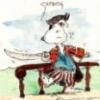

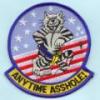
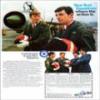
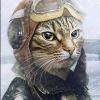
.thumb.jpg.d17ff607fc7e89ed057e63fcb6f2a888.jpg)


